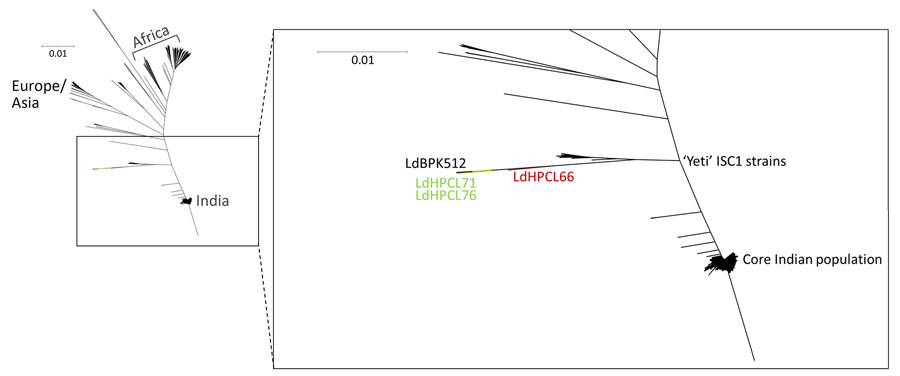Volume 30, Number 9—September 2024
Research Letter
Emerging Leishmania donovani Lineages Associated with Cutaneous Leishmaniasis, Himachal Pradesh, India, 2023
Figure

Figure. Phylogeny of Leishmania donovani lineages associated with cutaneous leishmaniasis, Himachal Pradesh, India, 2023. Novel L. donovani from this study (green) are compared with the global population of the 684 parasites previously reported in the L. donovani complex, including reference strains L. donovani LV9, L. donovani BHU 1220, and L. donovani BPK282A1. The previously isolated interspecific hybrid LdHPCL66 (red) falls halfway between the unique LDBPK512 and Yeti-ISC1 lineages. The novel LdHPCL71 and LdHPCL76 (green) nonhybrid parasites are more closely related to the unique LdBPK512 parasite. Scale bar indicates the modified Euclidian distance as calculated by TASSEL (https://tassel.bitbucket.io).
1These first authors contributed equally to this article.
2These authors were co–principal investigators.